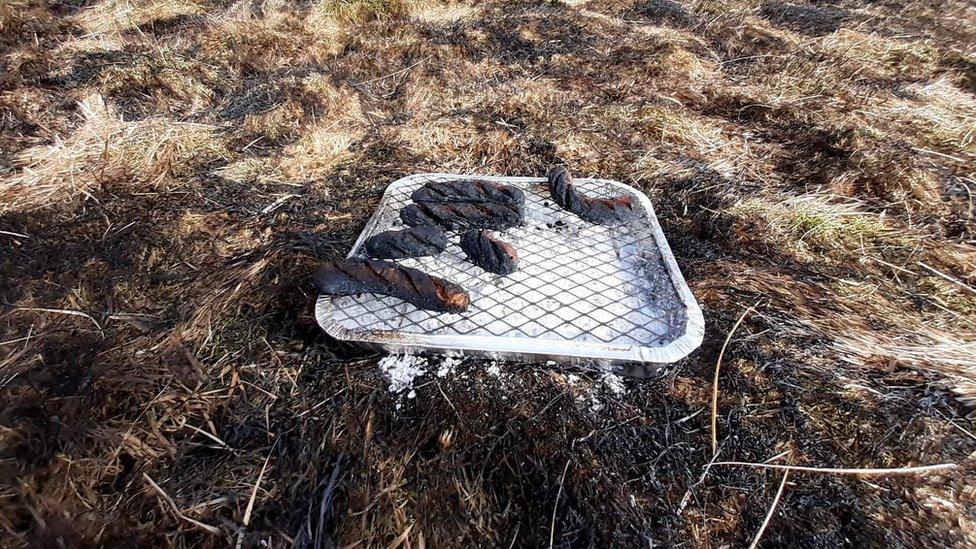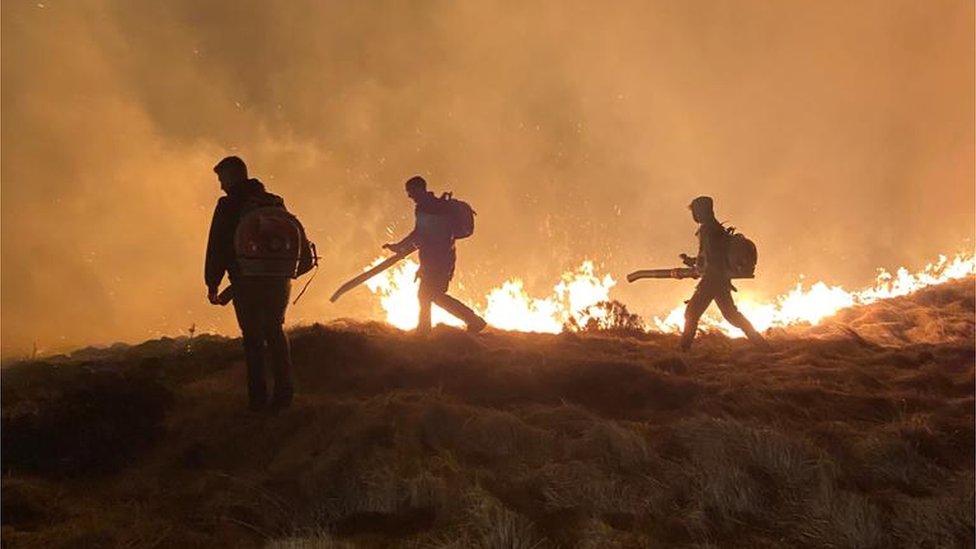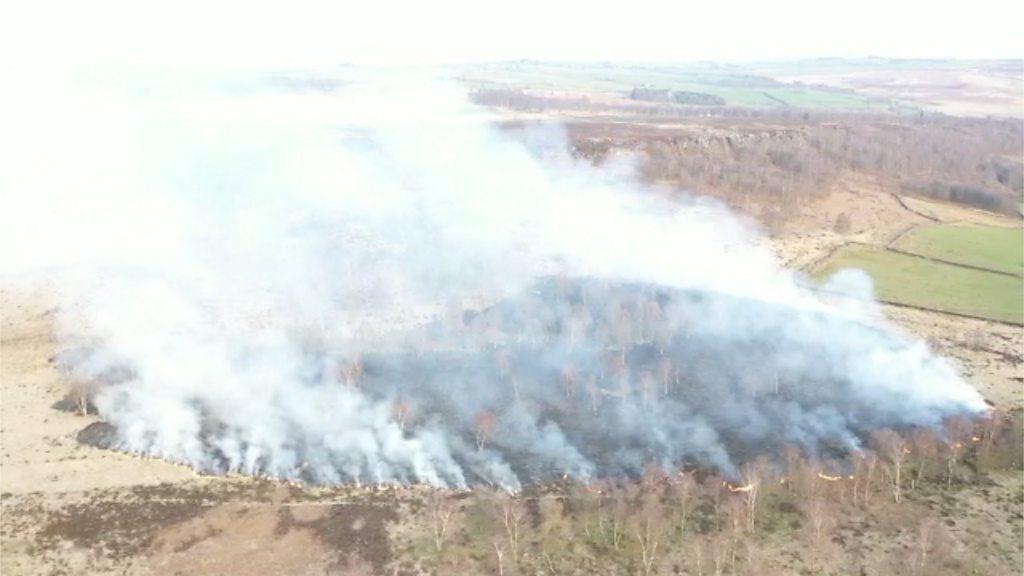Peak District: Wildfires pose significant threat to national park
- Published

Peak District wildfires are occurring more frequently, say researchers
There is a major risk of wildfires engulfing swathes of one of England's national parks, according to a report.
The research, produced for the Peak District National Park, states wildfires pose a significant threat.
Climate change means blazes could become so severe, they are beyond fire services' capabilities to control, the researchers found.
The report calls for the bodies involved to implement wildfire risk assessments and mitigation planning.
'Potentially devastating'
The research project focused on 38,860 acres of continuous moorland, centring on the Derwent Valley.
"Uncontrolled moorland fires are a critical threat and one which is likely to increase with climate change and continuing visitor pressure," the report states.
"Such fires have the potential to destroy large areas of habitat, impact wildlife, burn peat that has accumulated over thousands of years, release carbon to the atmosphere, impact water quality and affect people's livelihoods."

This disposable BBQ was found at the scene of a moorland fire
It added climate change was driving increasingly frequent periods of warm and dry weather.
"Where these conditions might have been observed once a year at the turn of the century, this is now occurring two to three times per year," it said.
"The pressure of visitors, some of whom do not appreciate the danger posed by their actions, as well as those with malicious intent, places the fringes of the Derwent focus area, particularly around the honey pot areas of Woodhead, Langsett and the Derwent reservoir complex, at significant risk."
Last year, people were warned not to light barbecues in the Peak District, following moorland fires.
Until April this year, there were 243 wildfires in the UK, compared with 237 for the whole of last year, according to the National Fire Chiefs' Council (NFCC).
The report used local knowledge and computer modelling to predict fire behaviour and fire response capabilities.
It also identified opportunities to reduce the devastation of blazes and called for a response from central government, land managers and government bodies.

The report says there is an urgent need to address the risk
Anthony Barber-Lomax, one of the report's authors said: "This report provides the first complete picture for people who manage this land.
"There is a significant risk of a wildfire which would be beyond the scope of the fire and rescue service to control.
"This is particularly worrying as the moorlands of the Peak District are home to some of our rarest species such as curlew, short-eared owl, mountain hare and merlin.
"As a society, we must act now to address some of these risks."
Sarah Fowler, former chief executive of the Peak District National Park and now chief executive of the Wildfowl and Wetlands Trust, who commissioned the report, said it had "the potential to be a real game changer in how we think about and mitigate fire risk on our upland moors".
The report called for the creation of a strategic wildfire management plan for the moorlands, with monitoring of areas where fires were most likely to start and planning for additional support, such as helicopters carrying water.
Paul Hedley, NFCC director, said: "Wildfire is an incident type which can have significant, and potentially devastating, impact on the environment, wildlife, local economy, infrastructure, and local communities - it therefore requires a cross-sector, coordinated response to mitigate the impact and consequences of a wildfire incident."

Follow BBC East Midlands on Facebook, external, Twitter, external, or Instagram, external. Send your story ideas to eastmidsnews@bbc.co.uk, external.
Related topics
- Published31 March 2021
